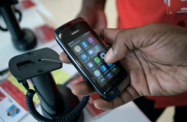Papua New Guinea is moving forward with plans to upgrade its ICT infrastructure and address connectivity issues, as it capitalises on its position as APEC chair in 2018 to promote an agenda for digital inclusion.

Under the core theme of “Harnessing Inclusive Opportunities, Embracing the Digital Future”, the APEC programme, which kicked off in March, is focused on improving connectivity and digital inclusion to bridge the digital divide in the APEC community and boost social and economic growth.
In a recent interview with OBG, David Toua, chairman of the APEC Business Advisory Council, highlighted the ways PNG can leverage its membership in APEC to boost the role of technology.
“PNG can benefit from APEC's highly advanced economies by leapfrogging its development through adapting their technology in our market,” he said. “The country has already taken a huge step forward in telecommunications, and now it is time for internet and other technological products. This will benefit PNG's reputation, accessibility, and forms a platform for small and medium-sized enterprises.”
Talks among senior officials will focus on how to achieve the goals laid out under the APEC Internet and Digital Economy Roadmap. Drafted in 2017, the roadmap’s key pillars include developing digital infrastructure, achieving universal broadband access, and creating government policy frameworks for the internet and digital economy.
Underwater cable key to connectivity plans
Improving digital infrastructure in particular is crucial for PNG to meet the goals laid out under the digital roadmap. Late last year the government took a significant step forward in this respect, signing a deal with fellow APEC member Australia for the construction of an underwater high-speed telecoms cable between Port Moresby and Australia.
Estimated to cost around $100m and be majority funded by the Australian government, construction of the 3000-km cable is expected to get under way later this year.
Once complete, the cable will improve capacity and connection speeds for homes and businesses in PNG. Much of the country’s existing international digital backbone is ageing or under-utilised; the two submarine cables currently in place – APNG-2 and PPC-1 – provide approximately 2.5 Gbps of capacity to a population of 7.6m. Demand is expected to grow to just over 450 Gbps by 2040, according to data from Australian think tank the Lowy Institute.
Efforts made to improve internet penetration
While demand for bandwidth is increasing, the overall internet penetration rate is still well below the global average, at around 11.7% in 2016.
As a result of a decade of government reforms and the opening up of the telecoms sector in 2007 to international competition, mobile coverage accessibility has increased from just 3% of the population in 2006 to 80% as of 2016, while the mobile penetration rate stood at 54.2% as of mid-2016, according to the UN’s International Telecommunication Union.
Despite this increase in uptake, PNG still has some of the highest mobile and broadband internet costs in the region, partly due to the challenges posed by its mountainous terrain and widely dispersed population.
To tackle this the government is looking at improving domestic mobile telephone infrastructure and expanding access to 3G and 4G services. The National Information and Communications Technology Authority is also planning to support the expansion of high-speed broadband to selected communities, according to local media reports.
“Access to the internet through such technologies as smartphones provides the opportunity for broader engagement in the market economy, particularly by women, SMEs [small and medium-sized businesses] and businesses from remote rural areas in PNG,” Ivan Pomaleu, senior officials meeting chair of APEC 2018, said in during an APEC event in March.
Expanded digital capacity to improve disaster management
Another area identified as having strong digital potential is the monitoring, warning and data collection of natural disasters and other adverse weather events.
The need to improve capabilities was brought into focus following the 7.5 magnitude earthquake that struck the country’s Hela Province on February 26, as disruptions to communications services hampered rescue and relief operations, subsequently making the collection of information relating to damage, casualties and specific needs of affected communities more difficult.
With the country prone to a wide range of natural disasters, industry figures say digital technology will play an increasingly important role in communications, information generation and analysis.


